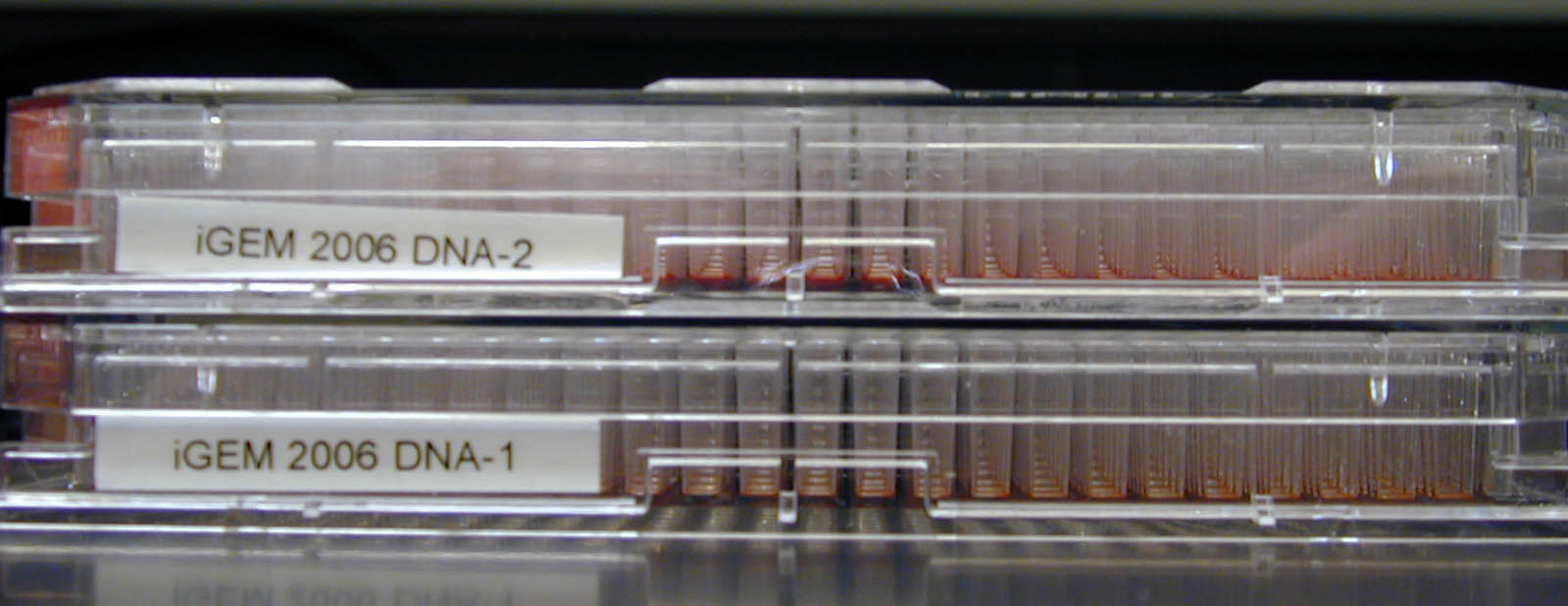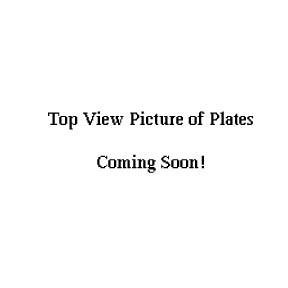Biobrick delivery
From 2006.igem.org
Editing in progress
One of the resources that MIT provides teams competing in iGEM is a copy of parts that have been submitted to the Registry. These parts also include those that were submitted as a result of previous iGEM competitions (a big reason why we want you to keep on top of [http://partsregistry.org/Help:How_to_send_parts sending] us your parts as you create them!). For iGEM 2006, the Registry will send out parts in the form of dried DNA.
Plates are being sent out starting 26 May 2006. We need your shipping address in order to ship your DNA Distribution Plates!! Fill it out [http://igem.org here] (you need a valid [http://partsregistry.org Registry] account). When we have a proper shipping address for your team, you will receive a package containing two plates that looks like this:
What do we do with this plate once we have received it?
As soon as you receive your plate put the plate, still in the freezer bag, into the freezer (-20 degrees or -80 degrees)!!
What do we do when we want to use the DNA?
The DNA in each well needs to be resuspended. To do this you must:
- Puncture a hole through the foil with a pipette tip (be sure you have the correct well)
- Add 15 ul of diH2O
- Take 1ul DNA and transform into your favorite competent cells, plate out on a plate with the correct antibiotic and grow overnight. Your goal here is to obtain single colonies.
- Pick a single colony and inoculate some broth (with the correct antibiotic) and grow ~18 hours.
- Use the resulting culture to miniprep AND make your own glycerol stock (for further instruction on making a glycerol see [http://openwetware.org/wiki/Endy:Making_a_long_term_stock_of_bacteria this page]).
This DNA is your own collection of parts that you can use to create your own parts. By making your own glycerols you now have your own stock to go back to and grow/prep whenever you need that particular part.
What is that red (or orange) stuff at the bottom of the wells?
What you see at the bottom of the wells is your dried DNA (see picture above). It is color-coded with food coloring according to our [http://partsregistry.org/Help:How_to_make_agar standard color key].
How do we know what the DNA is in each well?
By the time you receive your dried DNA plates, there will be a page on the [http://partsregistry.org/Main_Page Registry] where you can look up which parts are in which wells.

